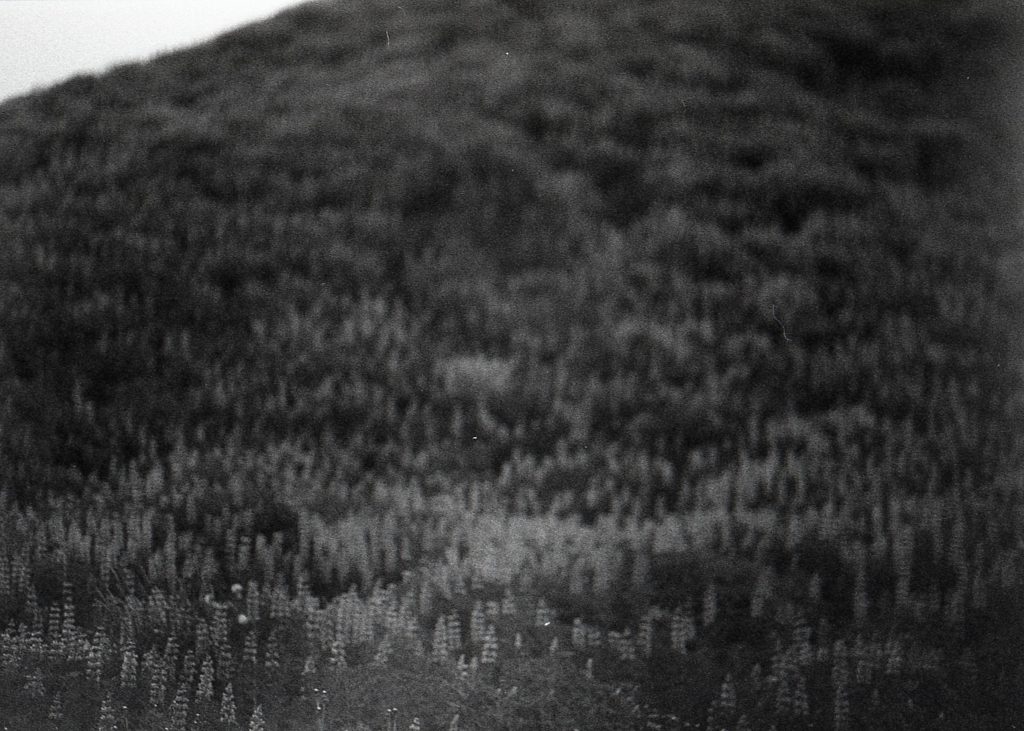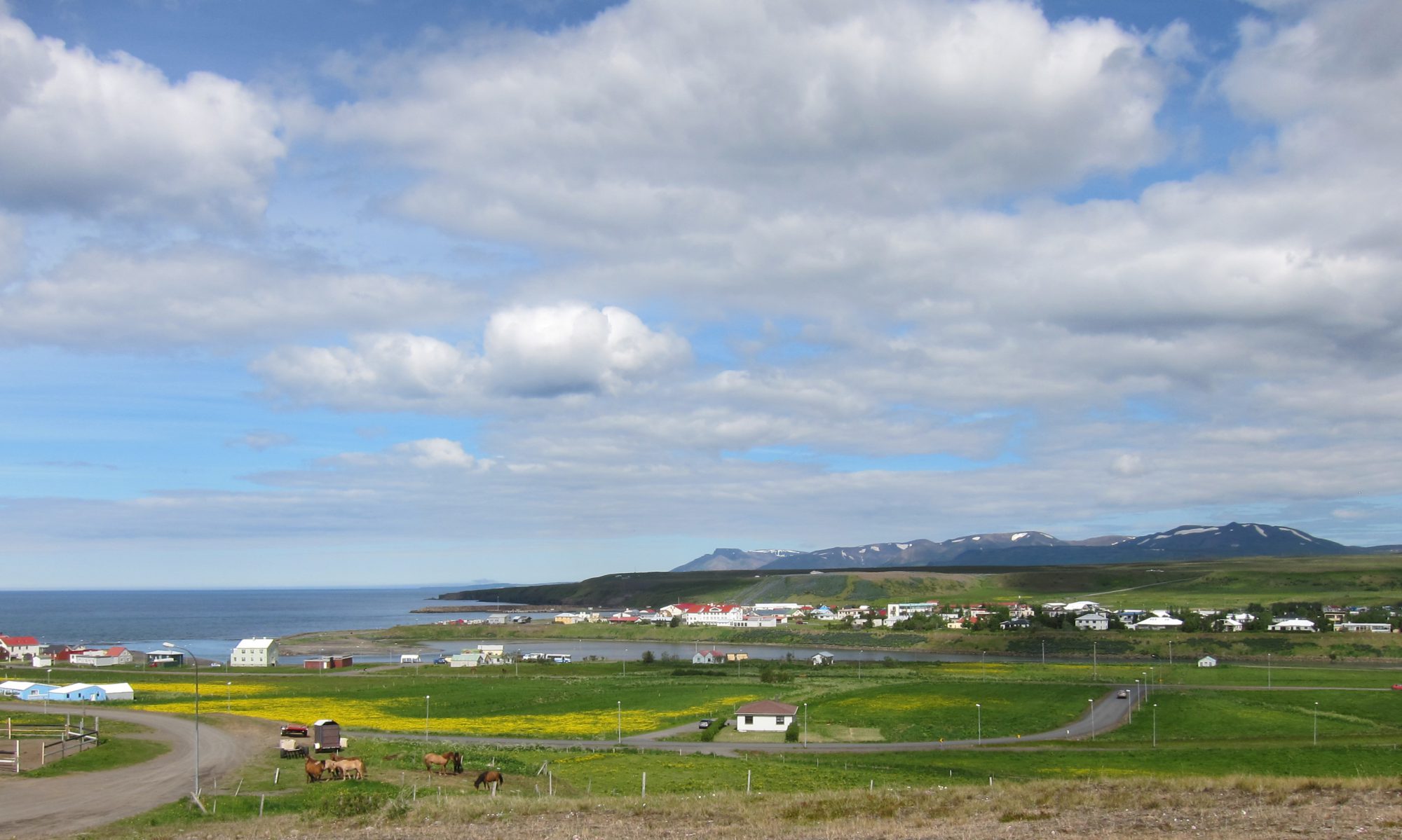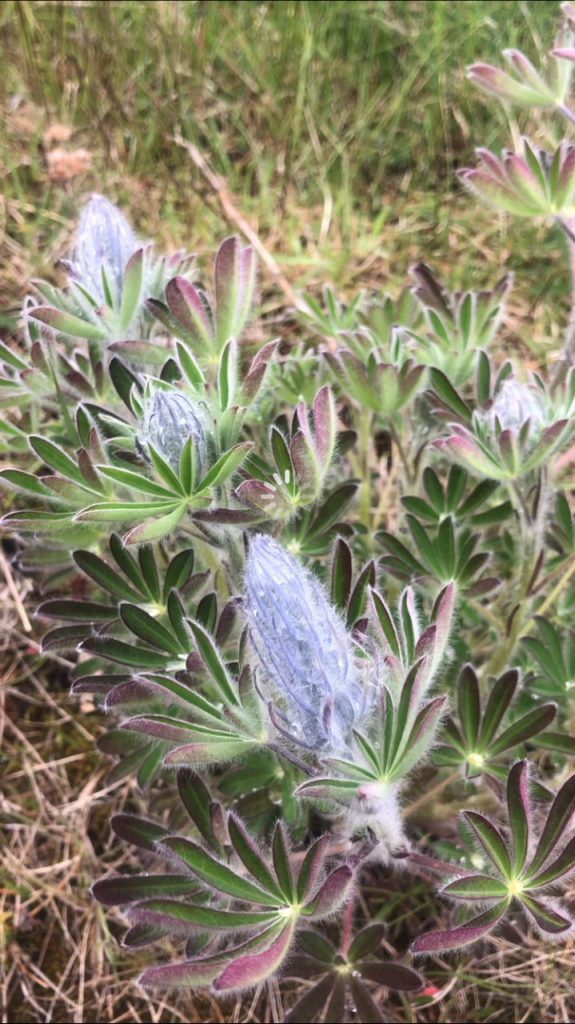
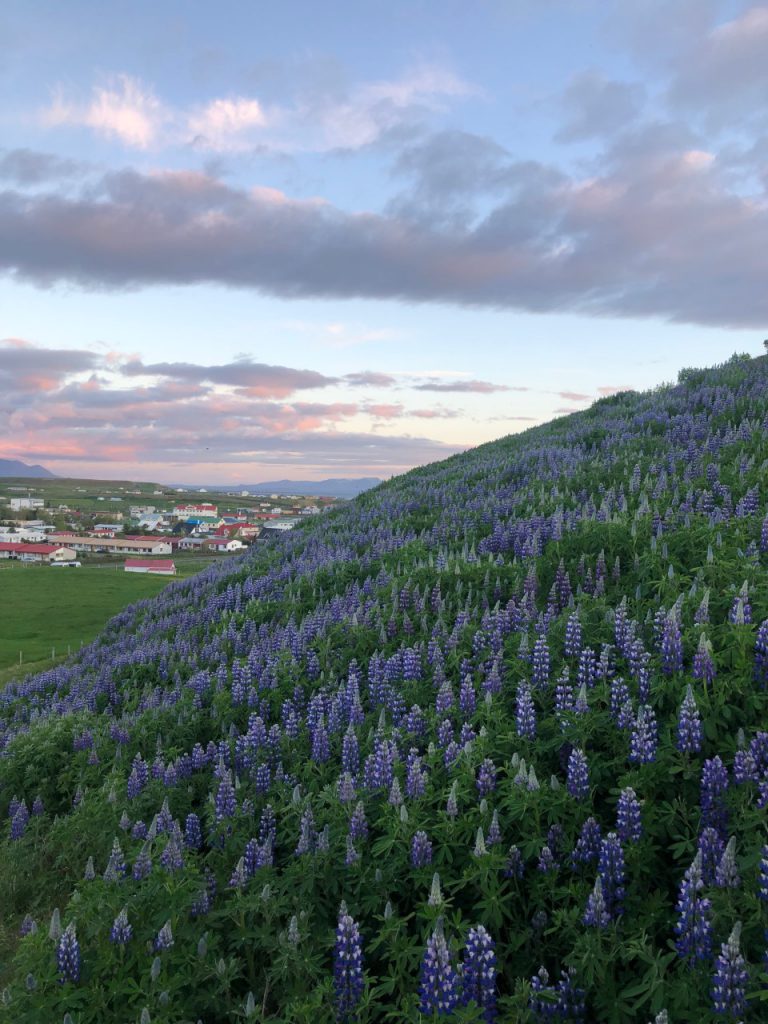
𝄡𝄞♩♪♫ … tiptoeeee through the lupinssssss, by the lupinssss thats where ill beeee …. ♬♭♮𝄢
Tapestry with Ragga! This is where it all started… I found this amazing sample of Lupine in Raggas glorious tapestry thread basket. It immediately struck me- like Lupine lightning- that I needed to make a uranium glass tapestry using this color. Uranium glass, also known as vaseline glass, is glassware from the depression era that was made for very cheap using small amounts of uranium. For the past two years I have been collecting it, using a UV light in thrift and antique stores to hunt it down. It is a very addictive scavenger/detective-esque hobby!
I asked Ragga if she had any more of the wee bit of thread, and she said that it was the last of a Lupine dye batch that she had possibly modified with something, but that she couldn’t quite remember. I immediately made it my mission to do absolutely anything in my power to recreate this magnificent magical pigment!
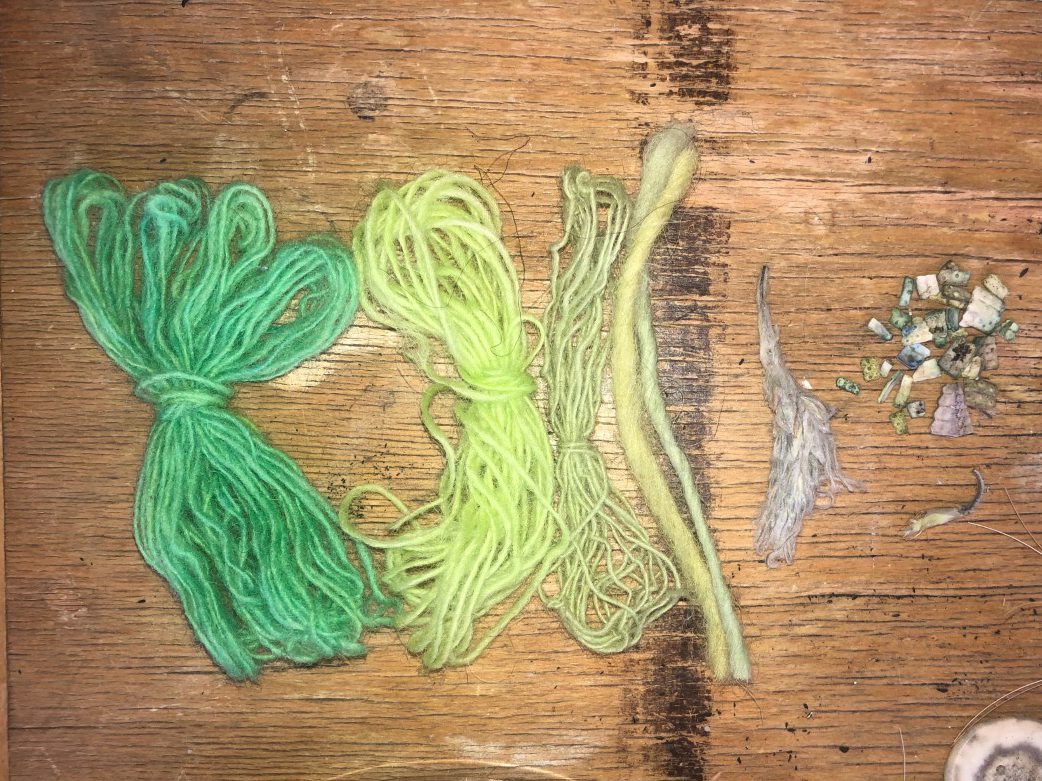

At our dye bath lesson with Deborah, I brought her the sample and inquired as to what she thought it might have been modified with to get the color. She came to the conclusion that it was probably Soda Ash, and after seeing the samples we all made together, I decided I would get to work on my first mission and theory: to make the most potent, most minty blue Lupine bath ever, and then modify it ever so slightly with Soda Ash to get that effervescent glow.
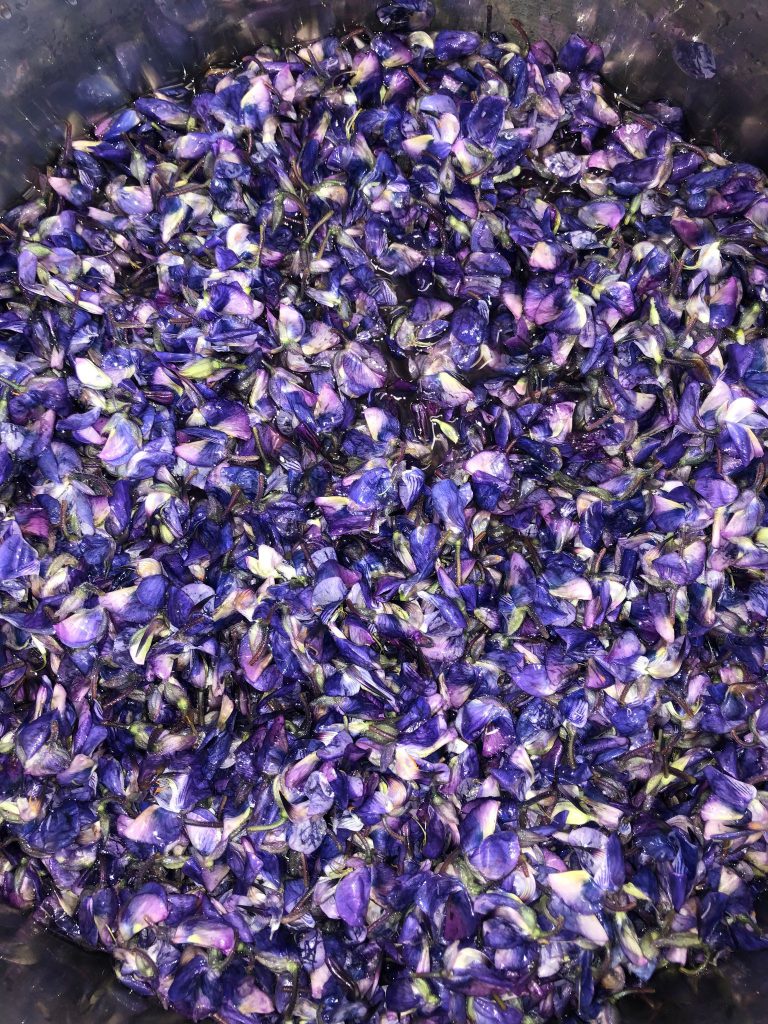
I found a glorious Lupine patch just before the big Lupine hill by the ocean, and only picked the darkest more purple-y stalks. My theory for this was that the more pigmented the purple would be, the more pigmented the green. This patch I found was also ideal because it didn’t have as many spiders or flies as the Lupines by the river Blanda (it was a whole rescue mission every time a spider was caught in the pot!) I also used the water from Alex’s first Lupine dye bath, to emphasize the extra strength of pigment.
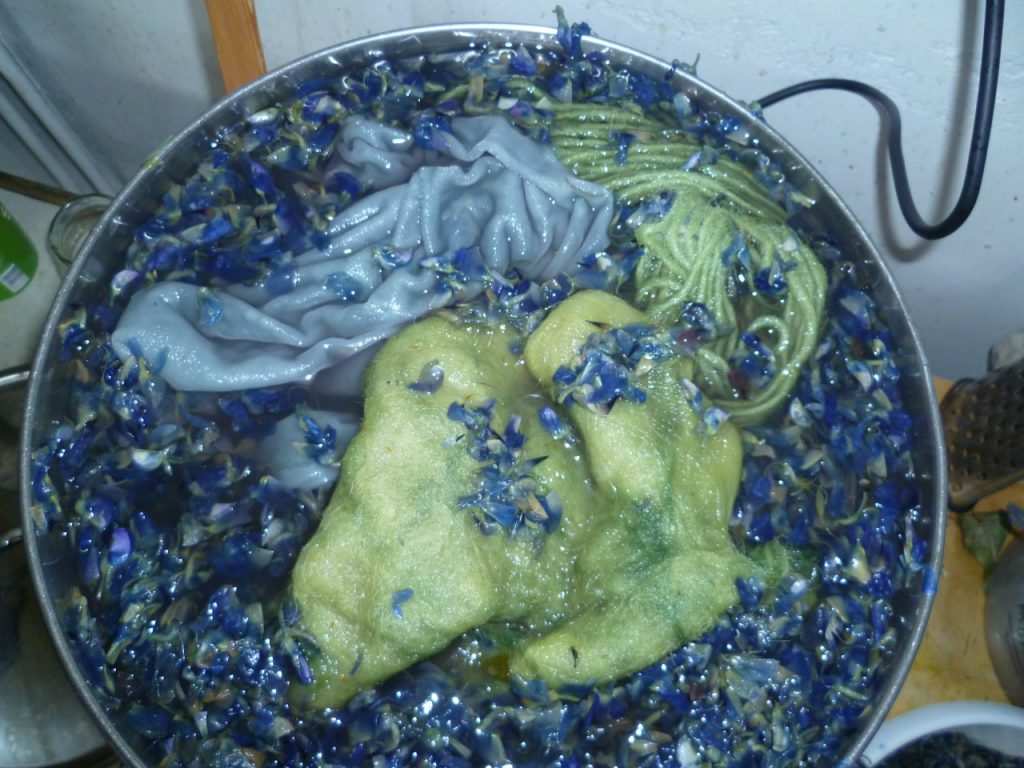
After putting in my Protein fibers, the silk velvet sucked up all the blue within seconds. This was my first ‘mistake’. I later learned, after talking with Gen, that silk is a little bit of a textile shapeshifter, and that it will not only snatch up all the pigment in a dye bath first, but also, generally it is hard to predict what shade it will decide to become. In this case, it turned a mysterious light blue, and, very pleased with the colour, I decided to take it out after the first hour. I left the rest of the wool in overnight and for the whole day we were in Skagastrond. Also important to note- I kept the temperature at 45 degrees celcius the whole time, just under the recommended 60. I think this helped, too, in getting the eerie blue color, and a more blueish green pigment.
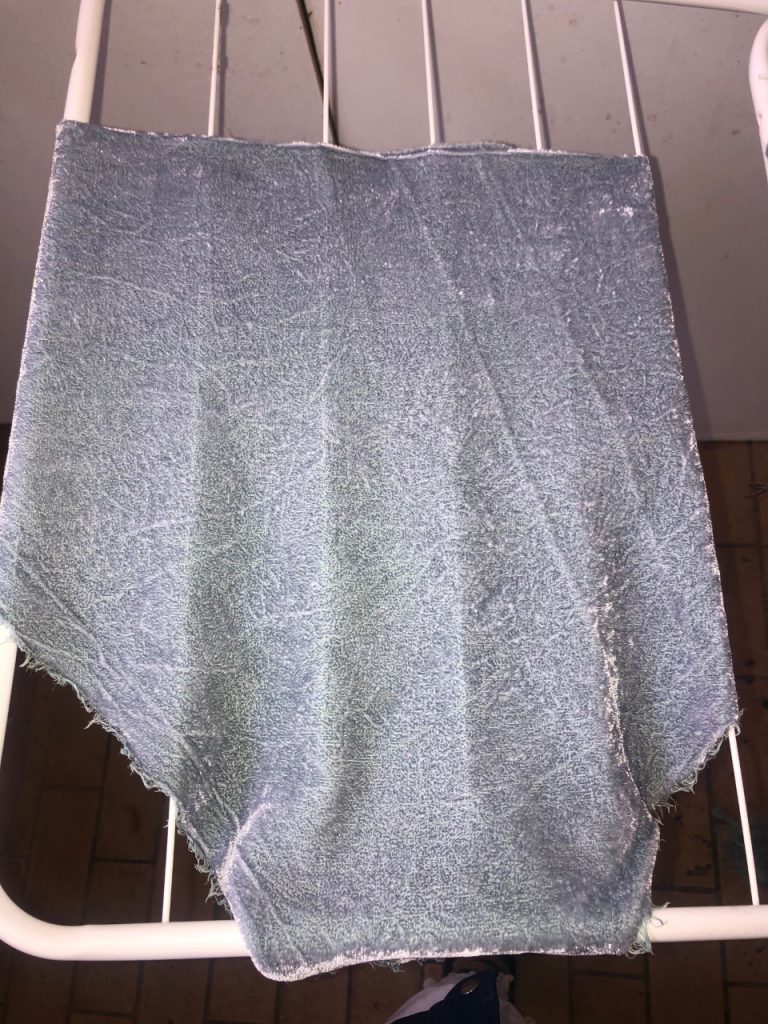
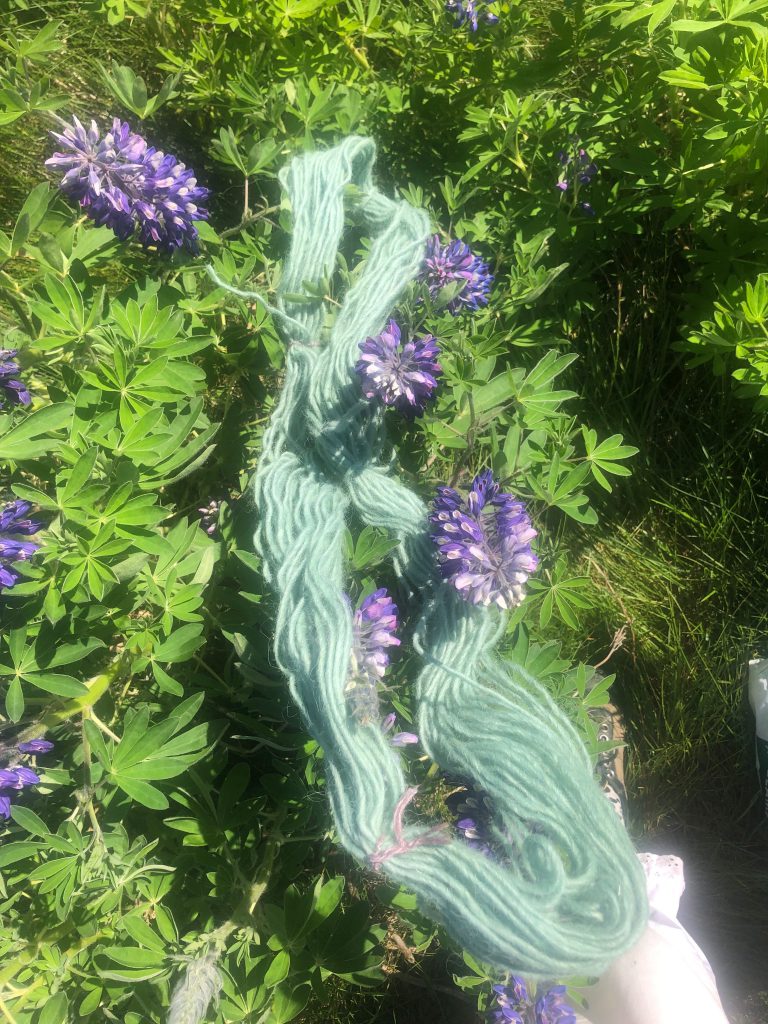

I was quite happy with my spoils, however, my quest did not end here. After treating a small sample of the Lupine Lopi with Soda Ash, and getting a really true, bright green, but not the bright mint I had hoped for, it was clear I still had work to do. It then occurred to me that I hadn’t yet rinsed out my protein fibers after the bath. (I had not initially planned to do this, but it was in the dye instructions). This is where things took a turn. Without realizing, I accidentally threw the small soda ash sample in with my other wool that I was rinsing in a large basin. I then dipped my silk in the same bucket for a mere few seconds before rinsing it under the tap. When I returned a few hours later… I was struck with an experimental HORROR!
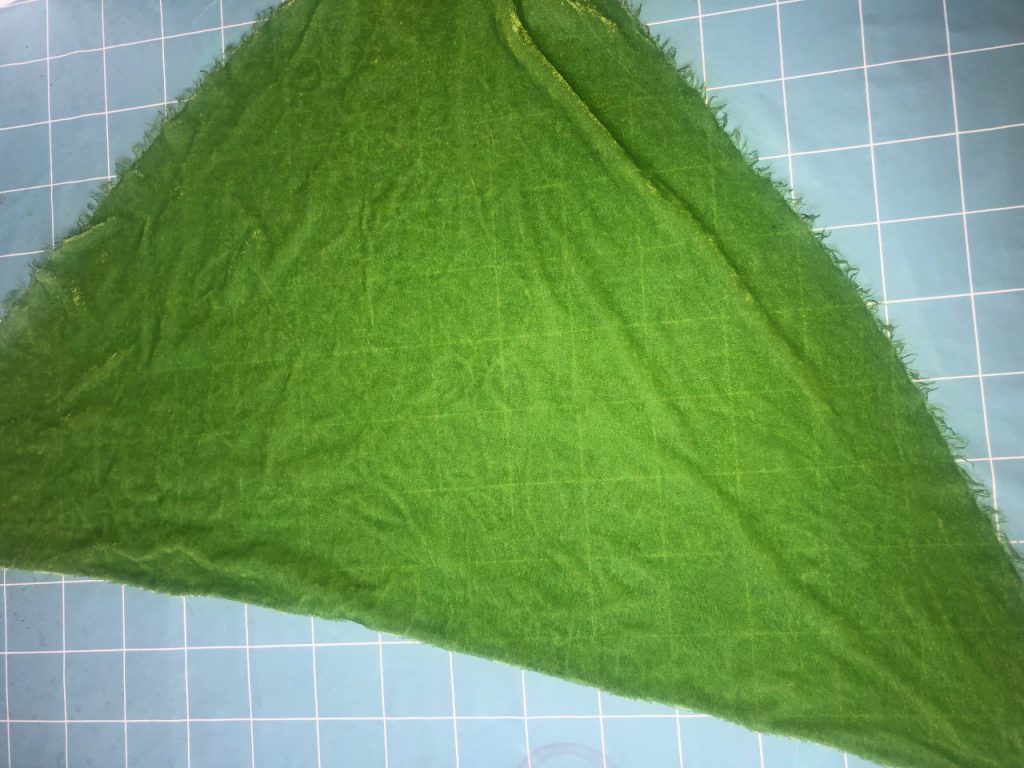
In the split seconds that it was in the same dye bath as the Soda Ash sample, the silk had soaked up the Soda and turned KERMIT GREEN! A transformation taking place partially as the fabric was drying. To be completely honest, I was on the verge of tears. How could I reverse this? What went wrong? Woe is me!
Then, Tiana had the completely genius idea to try reversing the chemistry. This was another huge learning experience for me! We tried treating the fabric with 7% vinegar and BOOM. It was like magic! The old color came back.

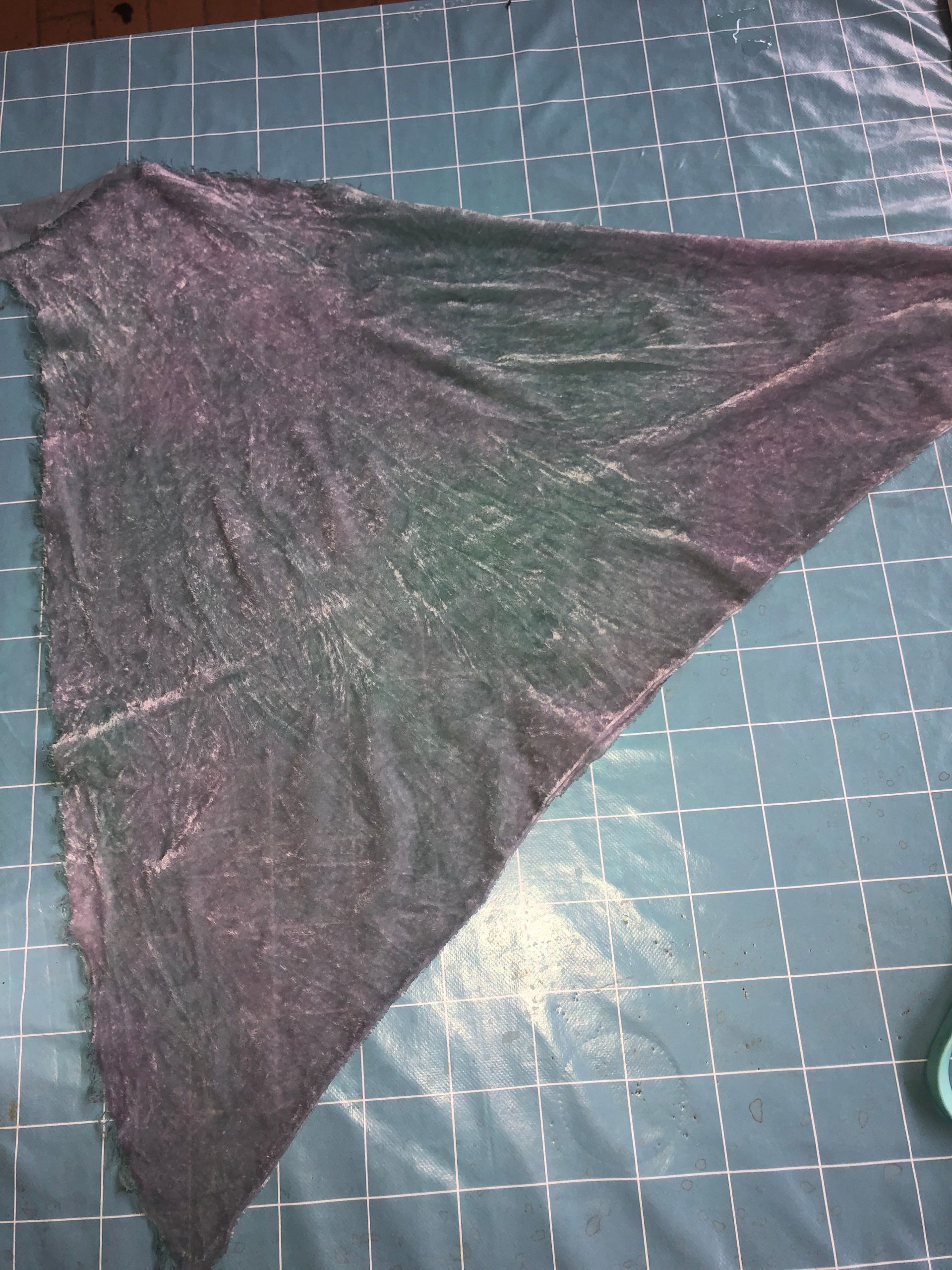
After successfully reversing the damage, I was overwhelmed with relief and experimental delight. These Lupines were so determined to show me all the tricks up their sleeves! As a final ruse, when I returned later to see the dried velvet, it had changed color AGAIN to a gorgeous, pearlescently pale minty green.
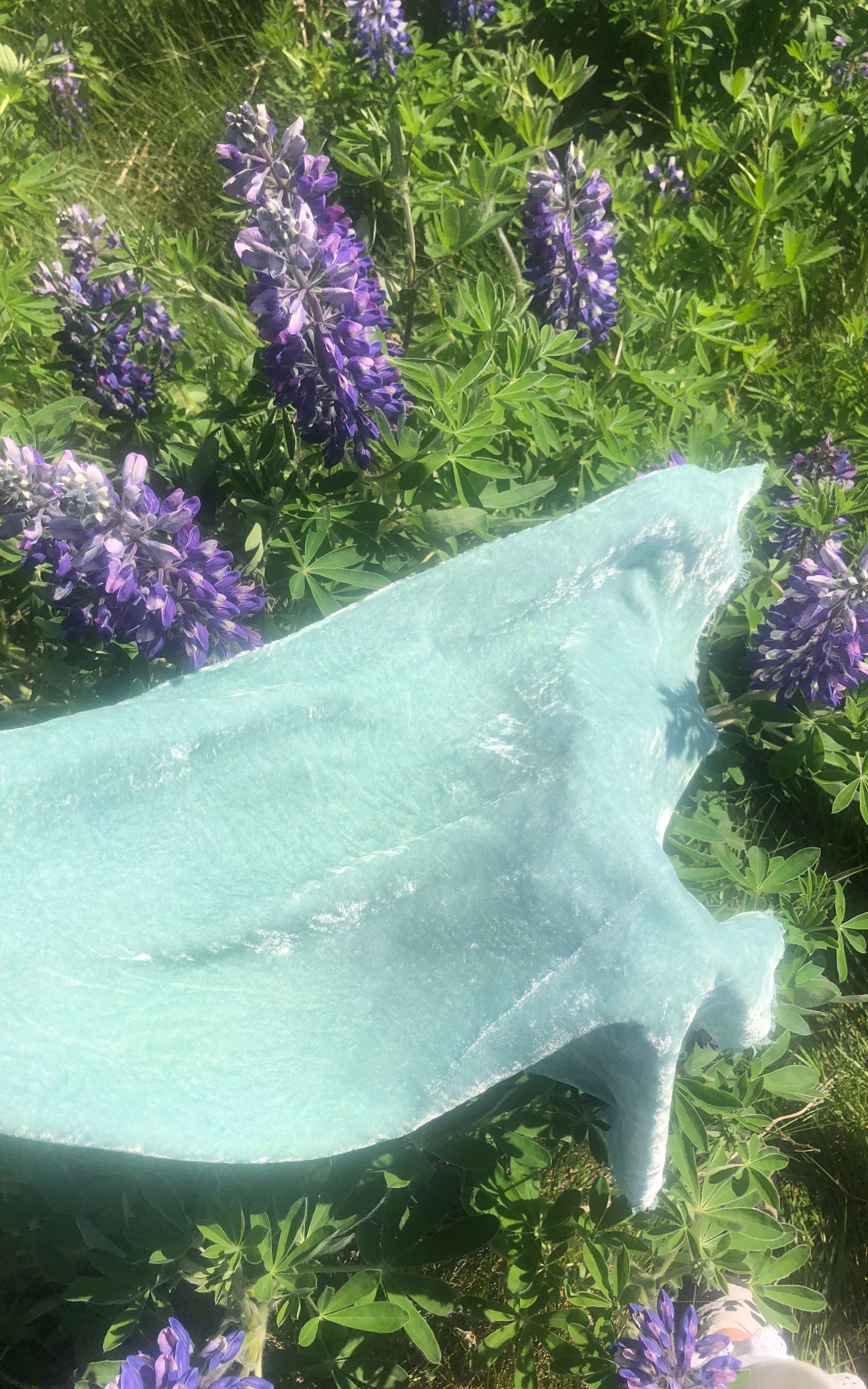
This time I didn’t even feel upset, I was simply in awe of the Lupine’s magic. In the sunlight, as pictured, the velvet had a nearly aqua glow, like the coolest shade of the river Blanda.

Still, after this, my Lupine quest wasn’t over. I dyed some cellulose fiber in an even stronger extra strength dye bath, and did another mini protein bath (but still very potent) to try to see if I could get the blue color that the silk had slurped up in the first dip. This theory did not stand, and the result was very similar to my first dye bath, although maybe a teensy bit more blue. It was then that my Lupine quest got a bit side tracked, as I put together pieces for my costume.
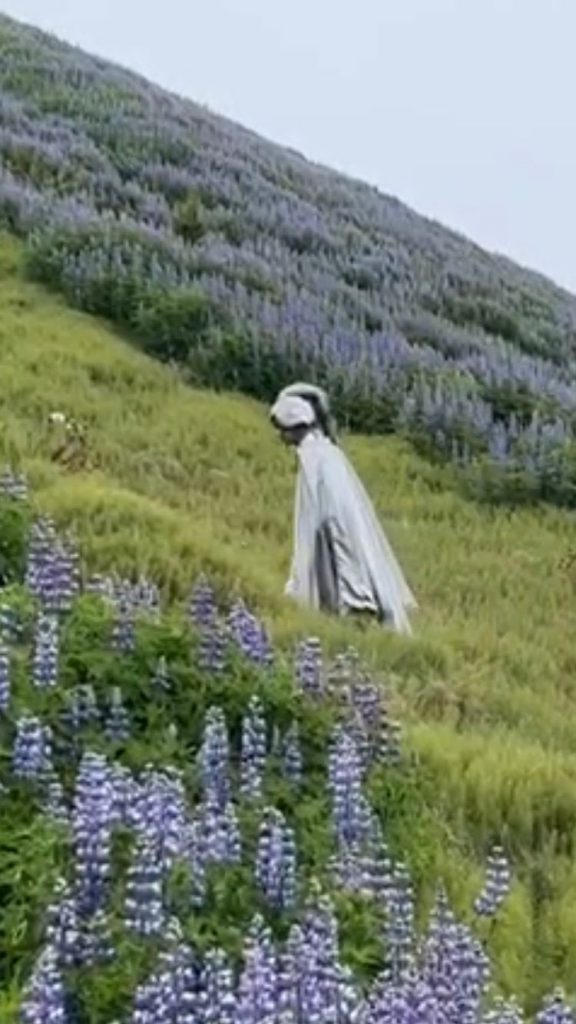
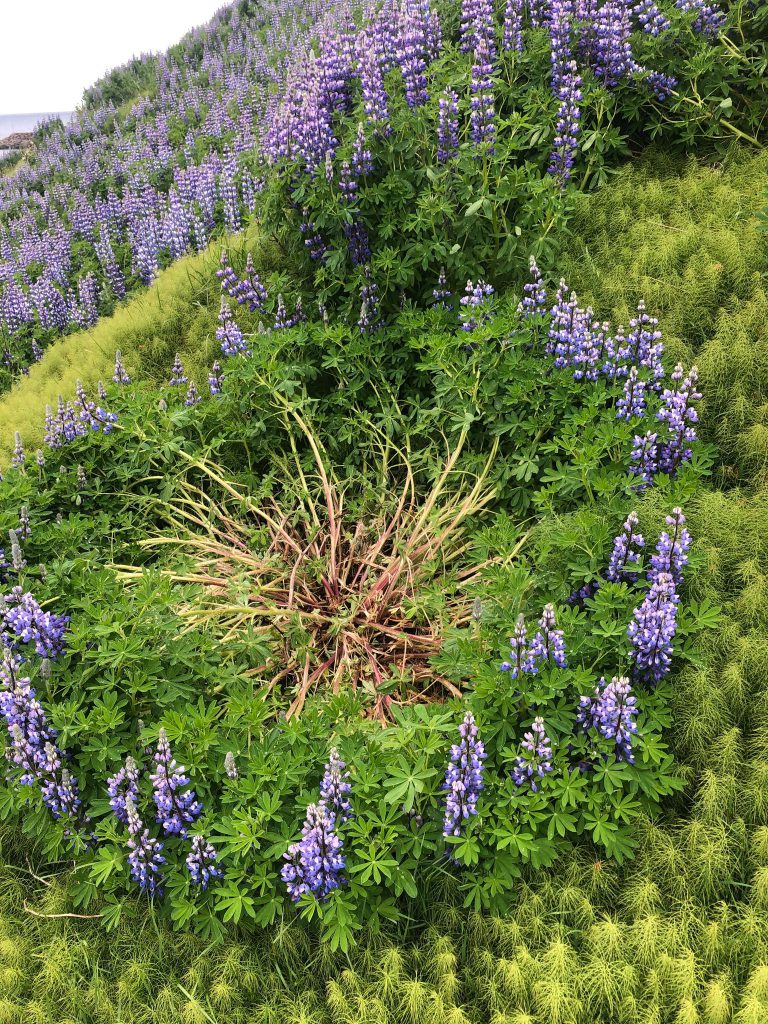
The grand Lupine finale part one was revealed while I was filming my performance on Super 8 with the help of Julia and Alex. It was extremely misty, and part of the performance involved me digging in the sand to bury an hourglass I had constructed. I made some sleeves for my costume out of Lupine dyed linen, and as I dug, they slowly started changing color, from the cool blue to bright green (but just on the areas that came into contact with the sand). It is likely that the sea salt took effect on the fiber. I’ll have to add more documentation to this post after I develop the film.

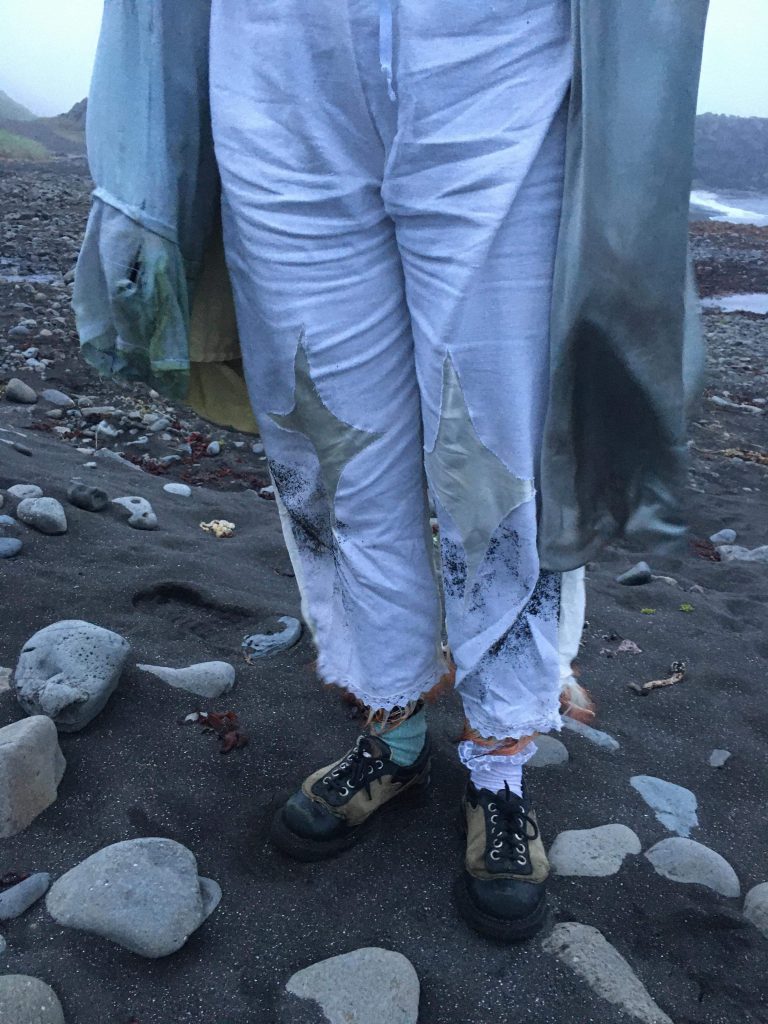
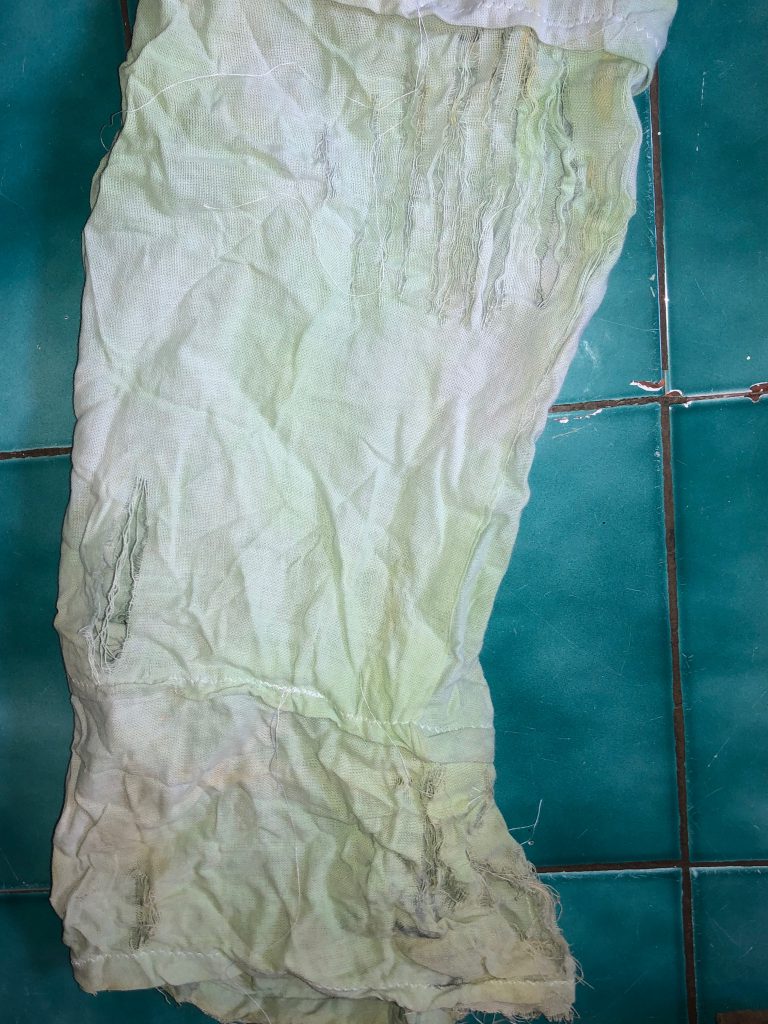
Grand finale part two was finally getting to the bottom of how Ragga got that zingy mint color. After showing her my experiments and explaining the journey I had been on, she remembered that she had potentially dipped the Lopi into the dregs of an Indigo bath, and THEN modified with soda ash. Aha! So it was the magical powers of the Lupine and Indigo combined that created such a delight. I will have to try it some day, but for now I’m happy with where my quest took me. What a precious experience to witness the full blooming cycle of these twinkly flora. I’m already missing my green fingernails, and the tender waggle of the Lupine’s in the wind.
